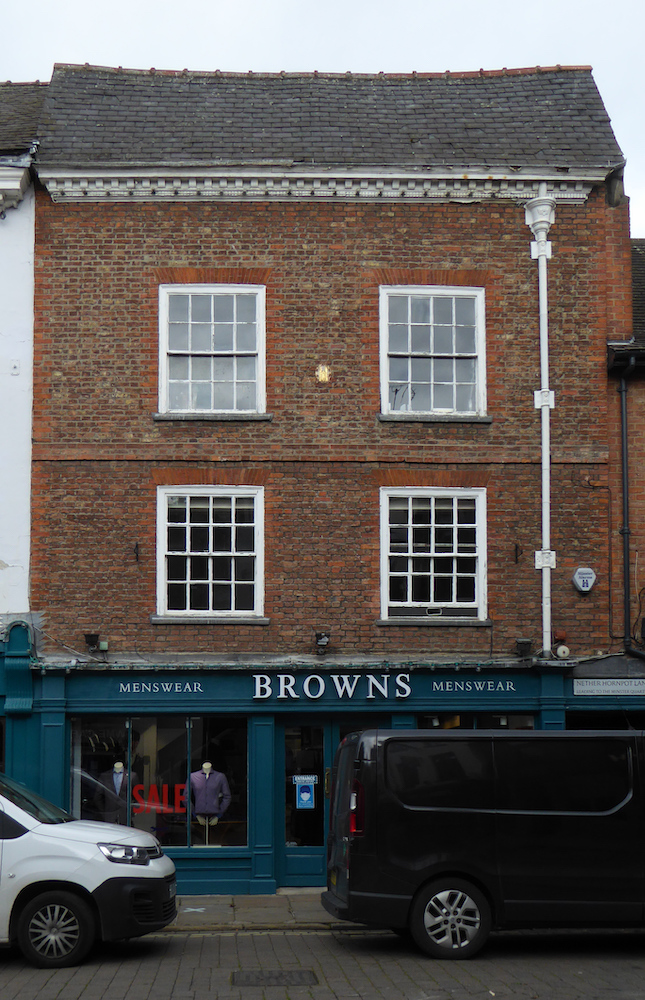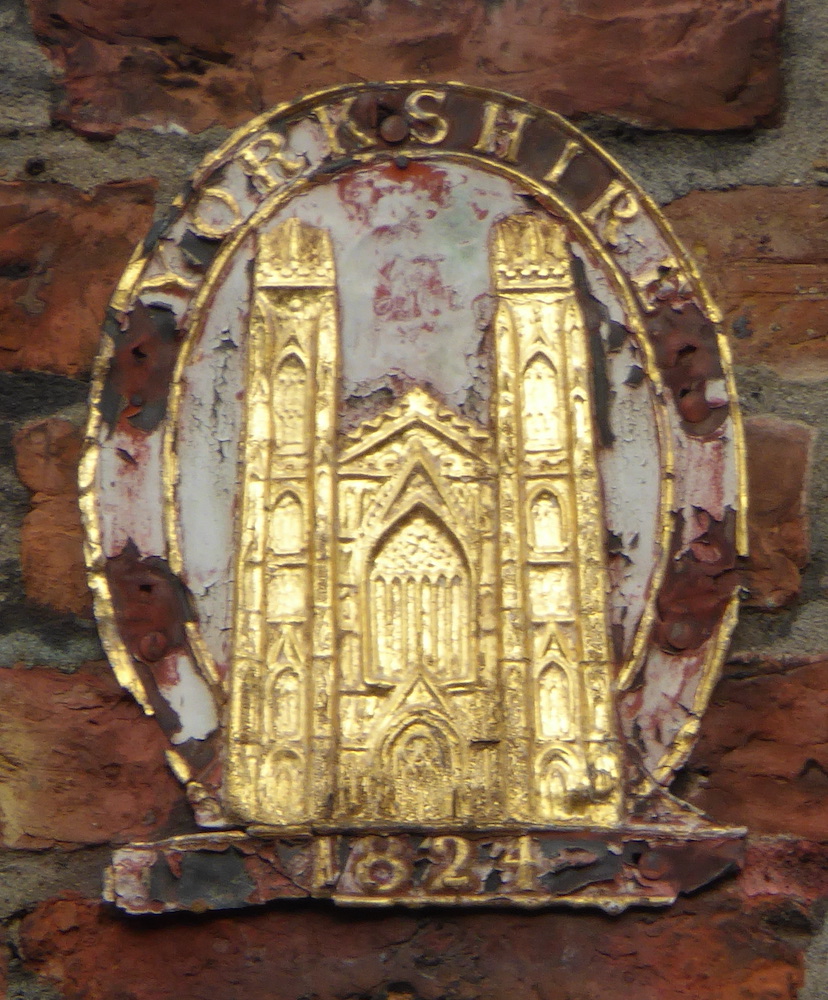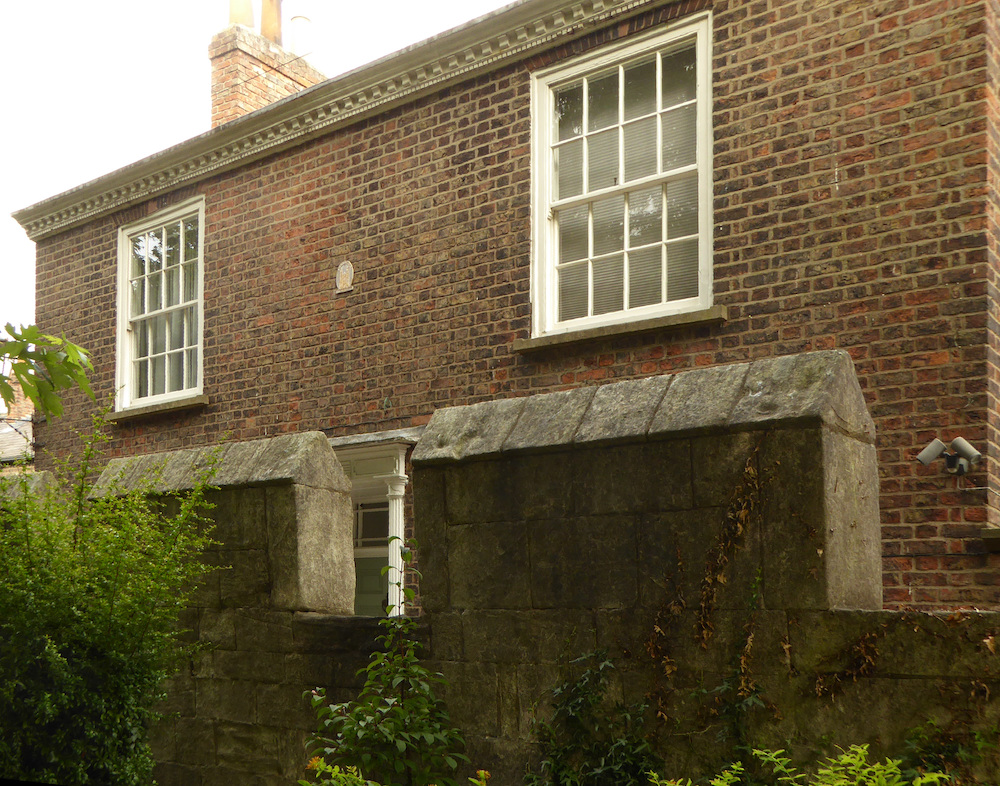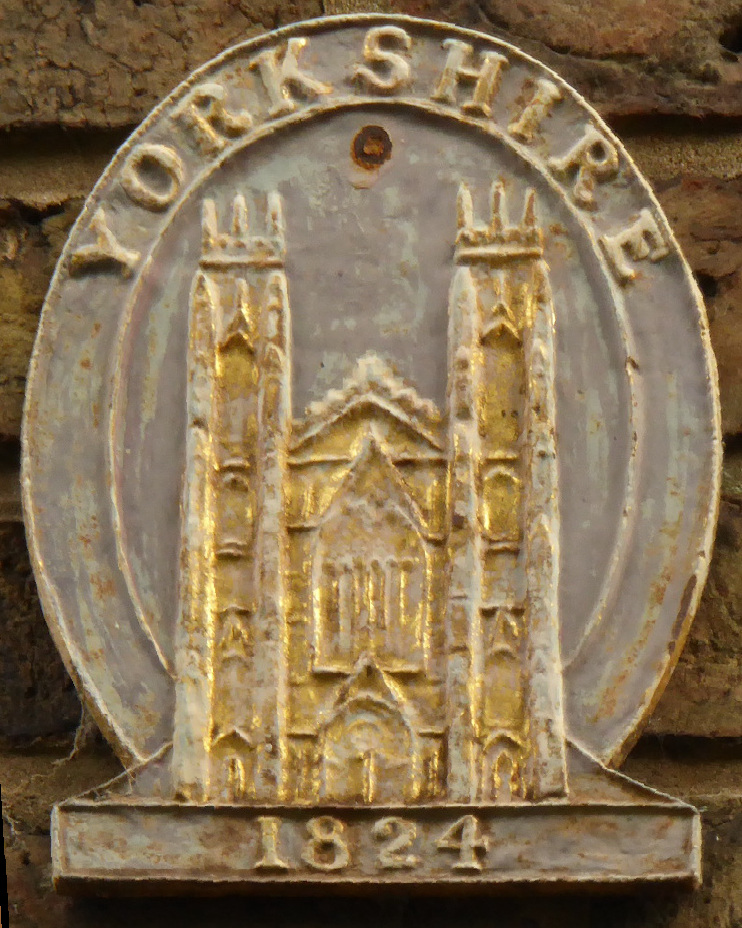Photographs by the author, who would like to thank John Shaw for his information. You may use the images without prior permission for any scholarly or educational purpose as long as you (1) credit the photographer and (2) link your document to this URL in a web document or to the Victorian Web in a print document. [Click on the images to enlarge them.]

The former fire station was built in 1845 by George Townsend Andrews for the Yorkshire Fire and Life Insurance Company. It is largely in brick, with the ground floor given a Doric arcade in stone: three openings for the engines, and a passage at either end to the living quarters. The following year, Andrews designed the company’s headquarters on St Helen’s Square.
The current address of the property illustrated is nos. 32, 34, 36 and 38 St Andrewgate: Nikolaus Pevsner and David Neave designate it as “no. 44” (230), but this seems to be an old numbering. In the 1885 York Directory, no. 44 St Andrewgate is listed as “Corporation Fire Brigade - William Driscoll, engineer”. The building, in a quiet residential street in the centre of York, is now divided into four apartments.



Views in the narrow street.
Fire-fighting services in York were for some time at the beginning of the nineteenth century run by the Corporation, but in 1830 they were made the responsibility of what was called at that timesimply the Yorkshire Insurance Company (founded 1824). Initially, the company had an engine housed in Eyre's Coach House, in Petergate, but in 1826 a building with room for two engines was bought in New Street; then in 1845 they opened this larger station in St Andrewgate. The North of England Assurance Company was also active and had fire engines in York in 1835. The Corporation took over the fire services again in 1875.
On the left above, the bay now bricked up and given a window would originally have been open for the engines. The width between the pilasters is just over 8ft (2.74m), less than that of carriage entrances on nearby properties.
The Inventory (building no. 388) gives more details of the fire station, for example: “The main building housed the 'new large Size Improved Carriage Fire Engine . . . Painted Blue picked Red and varnished . . . Writing on each side of Engine in Gold Letters, shaded, EBOR and in front YORKSHIRE FIRE & LIFE INSURANCE COMPANY 1845.' Much of the maintenance work was to be done on the premises, but the horses were housed elsewhere.” By 1845, the York engines were horse-drawn, whereas the Edinburgh pump wagon of 1824 had been moved entirely by manpower. After the Corporation took over the service again in 1875, a steam-driven engine was acquired.
The account in the Inventory (published in 1981, but perhaps written before the conversion into flats in the 1970s) ends: “The ground plan consists of two side passages flanking a single space for the engines, which is partly obstructed by a rounded stair-well. The beam supporting the back wall is supported at mid-point by a cast-iron column with a capital characteristic of Andrews. The upper floor, reached by two flights of stone steps with cast-iron balusters, comprises four main and two subsidiary rooms. A contemporary cottage at the rear is of two storeys, each of two rooms, with a straight staircase. It is of rendered brickwork with a pantiled roof.”
The Company's Fire-fighting and Fire Insurance Operations
The Yorkshire was one of several insurance companies active in the city. They employed firemen and assistants, and no doubt any volunteers who turned up at an incident; it took many men to pump the water supply with enough pressure to reach useful heights. Insurance companies used subscribers’ premiums to pay for the services of fire-fighters, which might include beer to refresh their efforts. Fire plaques or marks were fixed to a wall on the street to show that a property had insurance with a particular company.




Left two: A plaque on Thimbelina of York, 73 Walmgate. Right two: A plaque on Brown’s department store on St Samson’s Square.


A plaque on a house in Tower Place.
These plaques are all for the Yorkshire Fire and Life Insurance Company, and there are plaques for other companies, too (see related material links). Not every plaque in York is genuine, as it is known that at least one person in modern times made new casts of old plaques (information from John Shaw). Plaques for the Yorkshire Fire and Life Insurance Company can also be spotted outside the city itself. For example, there is one in Helmsley.
There was still some sort of fire-fighting facility in St Andrewgate in 1875, when the Yorkshire Company offered the use of the station with its three old engines to the Corporation. Serious fires occurred in the 1860s and 1870s but, despite the re-organisation under the Council, it was the water supply that limited effectiveness, as it did so many other features of life in the city. The Clifford Street fire station was opened in 1892 (“Fire Service”; “Public Health”).
Links to related material
- Fire-fighting and fire prevention (sitemap)
- Plaques in York for other fire insurance companies
- Pump Wagon (1824) in Lauriston Yard, Edinburgh
- The early days of the Edinburgh firefighting service
Bibliography
Fawcett, Bill. George Townsend Andrews of York: “The Railway Architect”. York: YAYAS and North Eastern Railway Association, 2011, 45.
An Inventory of the Historical Monuments in City of York. Vol. 5, Central. London, 1981: "Houses: Piccadilly - St. Saviour's Place," 199-212, building 388.
Pevsner, Nikolaus, and David Neave. Yorkshire: York and the East Riding. New Haven and London: Yale University Press, 2002, 230.
Sotheran, Catherine. York in close up. York: Fulprint, 2017. See pp. 17, 59 and 74.
Tillott, P. M., ed. A History of the County of York: the City of York. London, 1961: “Fire Service”; “Public Health in the nineteenth century.”
Created 8 November 2022